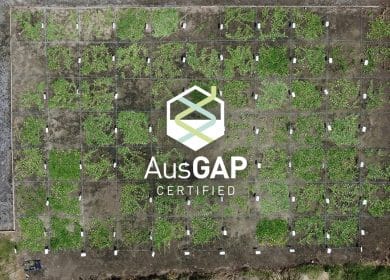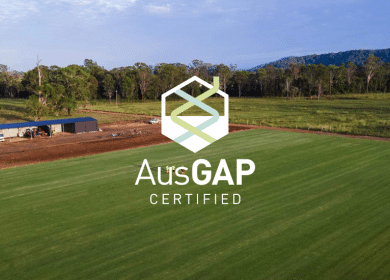Economic, Environmental and Health Benefits of Turfgrass

The Turfgrass industry is rapidly growing, with increased demand for property development in both the commercial and domestic sectors. With increased demand, studies suggest there are many benefits to turfgrass production and consumerism. Health and wellness, environmental, and economic sectors all benefit from the increase in turfgrass production. Read on to learn more about what studies are saying about the benefits of turfgrass in all it’s applications.
What are the health and wellness benefits?
Research has suggested turfgrass has many benefits to mental and physical health. Psychologically, families who walk in a park report better quality of family life and reduced problems with child behaviour. Spending time outside in greenspaces has shown improvements to immune systems but also has been proven to ease depression and anxiety and increase focus. Turf can also affect the physical health, with studies suggesting that hospital patients with a view of greenspaces such as parks recover faster than patients who don’t.
What are the environmental benefits?
Turf is a living breathing entity. It has the ability to improve air quality, absorb carbon dioxide and cool the surrounding environment as it can be 30 degrees cooler than synthetic turf and 14 degrees cooler than bare soil. In addition to turf having the ability to absorb noise pollution (especially in urban areas), it can also serve as bushfire retardant, studies have proven that natural turf can act as a form of firebreak interrupting the spread of fire.
What are the economic benefits?
On a macro level the turf industry is growing every year globally and affecting the economic climate as it benefits many sectors including lawn care services, garden retail stores, and lawn equipment and manufacturing. However, on a micro level turf has proven to be just as beneficial. Natural turf increases the property’s resale value by up to 20% or $110,000. Turf Also serves as a long-term cost saving avenue as some turf varieties are more drought tolerant and need less chemical input such as TifTuf or Sir Grange.
Growth in many industries has proven a demand for natural turf, and it can be seen from all the demonstrated benefits mentioned above as to why. Commercial and domestic, macro, and micro growth and property development, all benefit from the advantages of natural turf.
References:
Straw, C.M., Samson, C.O., Henry, G.M. and Brown, C.N. (2020). A review of turfgrass sports field variability and its implications on athlete–surface interactions. Agronomy Journal.
www.turfaustralia.com.au. (n.d.). Benefits of Turf. [online] Available at: https://www.turfaustralia.com.au/resources/all-about-turf/benefits-of-turf/
Chawla, Shiv & Agnihotri, Roshni & Patel, Mukeshkumar & Patil, Sudha & Shah, H.. (2018). Turfgrass: A Billion Dollar Industry.


